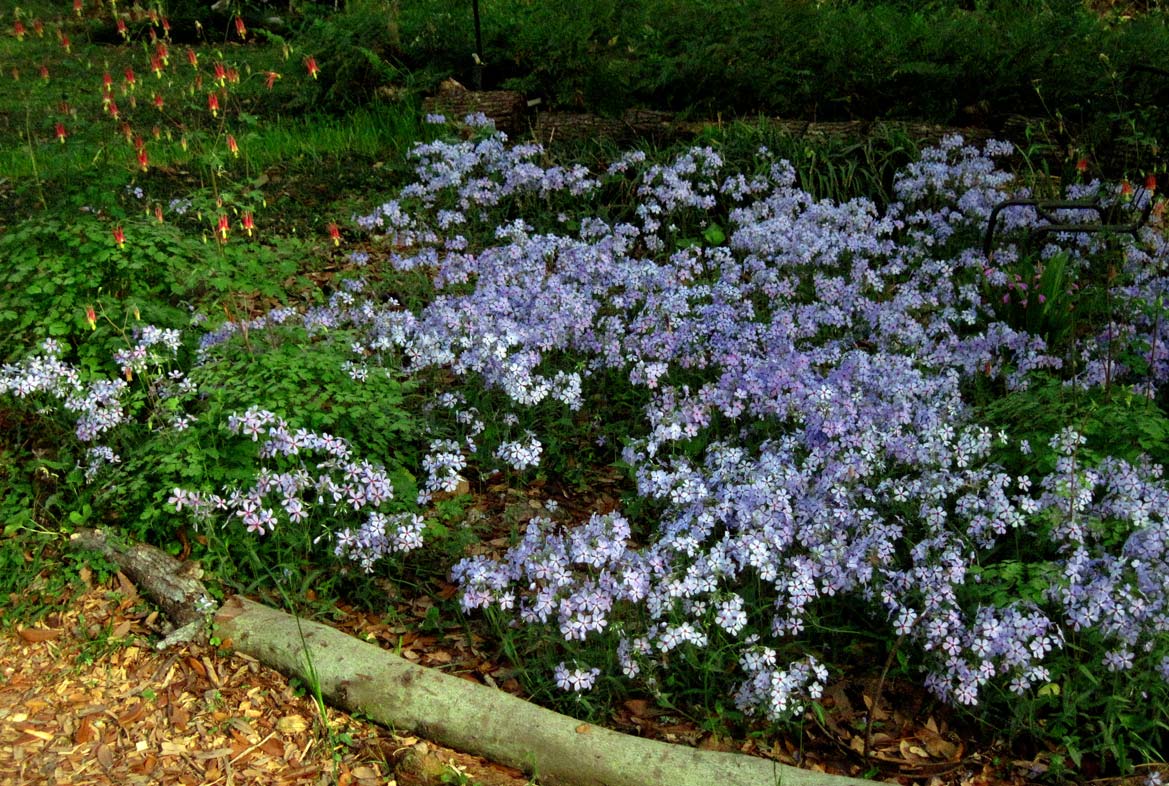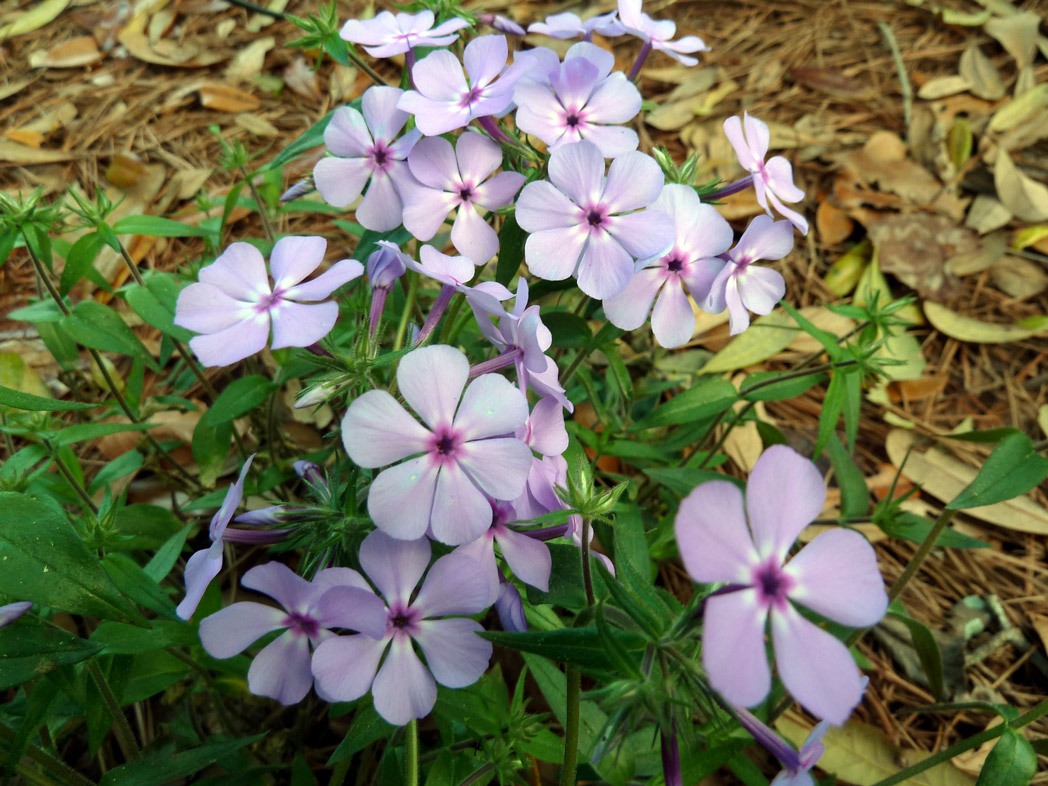Wild blue phlox
Pictured above: Wild blue phlox (Phlox divaricata) by Stacey Matrazzo. Click on terms for botanical definitions. View post as a PDF.
Also known as Woodland phlox, Wild blue phlox (Phlox divaricata) is a delicate perennial wildflower that blooms from spring into early summer. It occurs naturally in slope forests, bluffs and calcareous hammocks. It is limited to four Panhandle counties in Florida, but is widespread throughout the United States. Many pollinators are attracted to the blooms, especially butterflies. Its roots are eaten by rabbits and other small mammals.

Born in loose clusters, its fragrant flowers have five notched petals that are fused at the base. They are relatively large and range in color from bluish-purple to pale lavender to occasionally pinkish-white. Leaves are elliptic to linear, pubescent and oppositely arranged. Seeds are born in a capsule that, when ripe, turns gold and bursts, dispersing the seeds away from the parent plant.
The genus Phlox comes from the Greek phlóges, meaning “flame.”
Family: Polemoniaceae (Phlox family)
Native range: Gadsden, Jackson, Liberty and Washington counties
To see where natural populations of wild blue phlox have been vouchered, visit www.florida.plantatlas.usf.edu.
Hardiness: Zones 8A–8B
Soil: Moist, acidic soil
Exposure: Filtered sun to partial shade
Growth habit: 12–18″
Propagation: Division, seed
Garden tips: Wild blue phlox needs specific soil and light requirements to be successful in the garden or landscape setting. It is not salt- or drought-tolerant, nor will it thrive in full sun or full shade. In the proper conditions, however, it works well as a border or mass planting.
When purchasing plants, be sure you are getting plants grown in Florida from Florida stock. Check www.plantrealflorida.org to find a nursery in your area that specializes in Florida native plants.

